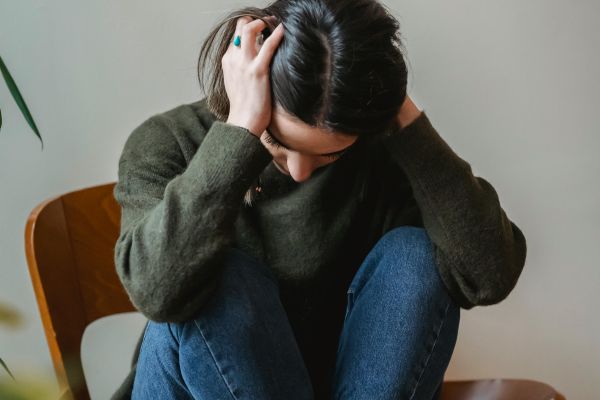If people didn’t feel fear, they wouldn’t be able to protect themselves from legitimate threats. Fear is a vital response to physical and emotional danger that has been pivotal throughout human evolution, but especially in ancient times when men and women regularly faced life-or-death situations.
Today, the stakes are lower, but while public speaking, elevators, and spiders don’t present the same type of immediately dire consequences that faced early man, some individuals still develop extreme fight-flight-or-freeze responses to specific objects or scenarios.
Many people experience occasional bouts of fear or “nerves” before a flight, first date, or big game. But when someone’s fear is persistent and specific to certain threat, and impairs his or her everyday life, that person might have what’s known as a specific phobia.

At least 60 percent of adults admit to having at least one unreasonable fear, although research to date is not clear on why these fears manifest. One theory is that humans have a genetic predisposition to fear things that were a threat to our ancestors, such as snakes, spiders, heights, or water, but this is difficult to verify, although people who have a first-degree relative with a specific phobia appear more likely to have the same one. Others point to evidence that individuals fear certain things because of a previous traumatic experience with them, but that fails to explain the many fears without such origins.
Personality traits such as neuroticism appear to increase one's likelihood of developing a phobia, and a tendency toward frequent worries and negative thoughts may also increase the risk, as may being raised by overprotective parents, losing a parent, or sexual or physical abuse. Most likely is that people follow multiple pathways to fears, not least among them the emotional response of disgust.
Throughout human history, certain animals, such as snakes and spiders, have caused high numbers of deaths. Thus, some researchers believe, men and women may have evolved to carry an innate instinct to avoid such creatures, as it would deliver a survival advantage. Some studies have shown that it’s easier to condition people without apparent fears of any animals to fear snakes and spiders than to fear dogs or other “friendly” creatures. Studies of other primates show that they share humans’ fear of snakes, leading some to speculate that such fears themselves may have spurred the growth of primate intelligence overall, as humans and others evolved to avoid the dangers posed by such threats.
Research shows that babies do not appear to show signs of fear until around 8 to 12 months of age, usually in response to new people or events, but they are less likely to show a fear of strangers when sitting on a parent’s lap. And while some fears may be innate in humans, many fears are learned, perhaps most commonly by seeing a parent react fearfully to an animal or situation, or to frequently warn a child about its dangers.
There are times when people actively pursue experiences that could scare them, like a roller coaster or a haunted house attraction. Some research suggests that even though these experiences can be truly frightening in the moment, they may also boost people’s moods: The scare response is sincere, but the quick reassurance of safety delivers an equally strong jolt of relief and enjoyment that may linger well after the experience.
Some feelings commonly described as “fears” are not strictly phobias, but mental obstacles that limit people’s actions and decisions, often preventing them from making progress, such as the fear of failure, the fear of success, the fear of rejection, the fear of missing out, or the fear of commitment. These feelings of insecurity, unworthiness, or indecision can often be addressed in therapy.

A phobia is a distinct fear or anxiety about a certain object or situation, exposure to which consistently provokes fear or causes distress in the sufferer. The fear experienced is almost always disproportionate to the true danger the object or event poses, and people with specific phobias generally know there is no real reason to be afraid and that their behavior is not logical. However, they cannot avoid their reaction.
Phobias fall into five broad categories:
- Fears of animals, such as fear of dogs (cynophobia), spiders (arachnophobia), or bugs (insectophobia or entomophobia). These fears, known as zoophobias, also include the fear of bats (chiroptophobia) and of snakes or lizards (herpetophobia).
- Fears of the natural environment, such as a fear of heights (acrophobia) or of storms. These phobias also include fear of fire (pyrophobia) and fear of the dark (nyctophobia).
- Fears related to blood (hemophobia), injury, and injection, such as a fear of needles (trypanophobia) or medical procedures including dentistry (dentophobia).
- Situational fears, such as a fear of flying (aerophobia), a fear of public speaking (glossophobia), or a fear of riding in elevators, which is itself a type of fear of closed spaces (claustrophobia).
- Others, such as a fear of vomiting or choking.
Phobias can manifest at any time, but tend to emerge in childhood or adolescence, and the symptoms are often lifelong. In some cases, exposure to the feared object or situation (the phobic stimulus) can cause full or limited panic attacks. As many as 9 percent of Americans annually experience a specific phobia, according to the DSM-5, and women are twice as likely as men to have a phobia. It’s not uncommon to have multiple phobias: three-quarters of individuals diagnosed with a specific phobia have more than one and the average sufferer has three. The onset of a phobia can sometimes be traced to a specific event, like surviving a plane crash or being attacked by a dog. But for many more people, the origin of the phobia remains unknown. Some people with a specific phobia change their lifestyles to avoid their triggers, moving to a region where certain animals are rare, for example, or where there is no subway.
To learn more about causes and treatments, see our Diagnosis Dictionary.
Agoraphobia is the fear of situations that would be difficult to escape from or from which it would be difficult to get help, such as being in a movie theater or subway car. People with agoraphobia may fear public transportation, open spaces such as bridges, enclosed spaces like elevators, crowded places like concerts, and being away from home in general. Sufferers may become highly distressed when they find themselves in such situations and will go out of their way to avoid them.
Fear of heights is a common phobia, and one that is often experienced intensely. In fact, the symptoms often mirror those of a panic attack, including trembling, sweaty palms, nausea, and dizziness. Some have this phobia because of a traumatic experience but research suggests that, for many others, this fear, and similar ones such as claustrophobia, is a consequence of being more acutely aware of their bodily sensations than others, and more likely to interpret those sensations as threatening, leading to negative thoughts about jumping, losing their balance, or having a heart attack.
It’s often stated that the fear of public speaking is the most common phobia. It isn’t; only about one in four people report experiencing it. But when those with glossophobia are asked to speak before a group, the fear can be paralyzing. People who generally experience high levels of anxiety may worry not only that their speech will be ineffective but that their anxiety will somehow undermine their performance. For others, there are plenty of other sources of discomfort, such as feeling unqualified to speak with expertise, worrying about being evaluated by higher-status colleagues, and, quite commonly, overestimating the stakes of their performance.
Preparation, practice, support from others, and learning to put oneself in a calmer, more relaxed state can all help ease the fear of public speaking, but one of the most important steps people can take is to challenge their beliefs. Cognitive reframing of one’s worries—challenging beliefs about being boring, anxious, or uninformed and replacing them with more favorable, supportive, and, significantly, realistic statements can help someone gain confidence and more accurately perceive the level of threat.
Clown-like characters have been a part of popular culture for centuries. Yet some people have always found them creepy, and about 2 percent of the population experiences coulrophobia, or a fear of clowns. The reaction may be due not just to news reports of crimes by people in clown masks or makeup, but to the ambiguity that even harmless clowns present. With painted-on, unchanging expressions, clowns’ emotions can be hard to read and their intentions may seem unpredictable. The phenomenon known as deindividuation, leads to further unease: Since the identities of the men or women behind the makeup are hidden, others may become fearful of what they might do under cover of anonymity.
Tokophobia, or the fear of pregnancy and/or childbirth, is a longtime phobia but one that has only recently been seriously researched. It affects both women who have experienced pregnancy and those who have not. Sufferers can experience terror, panic, or intense disgust at the very idea of becoming pregnant, leading to difficulty in forming romantic relationships and depriving women of the family they sincerely desire to have. (Women who simply do not desire children do not have tokophobia.)
Nomophobia is a recently coined fear, with “nomo” standing in for “no mobile.” Researchers who have observed individuals experience intense anxiety, fear, or withdrawal when separated from their mobile phones (or even from mobile phone reception) believe the response is based on the devices’ primary function as a means of connection with close attachments like friends, partners, and relatives, and their role as “human attachment substitutes” because they carry photos, messages, and other cherished personal information.

Fear often takes forms other than specific phobias. For example, social anxiety disorder, which is also known as social phobia, entails a deep fear of other people’s judgment, evaluation, and rejection that limits sufferers’ enjoyment of life. Individuals with social anxiety may avoid situations in which they will be exposed to the scrutiny of others, such as giving a speech, eating in front of others, meeting new people, or engaging in group conversations.
To learn more, see Types of Anxiety.
No, but social anxiety can lead to depression, and vice versa. People who experience social anxiety may endure extreme unhappiness, self-doubt, and even hopelessness, symptoms which overlap with those of depression. But research on the two conditions reveals a core feeling of worthlessness, or feeling that one is undeserving, whether of happiness or of other people’s friendship. Addressing that symptom in therapy could help to address social anxiety before it triggers depression.
The techniques of cognitive behavioral therapy may help sufferers begin to overcome social anxiety. Practicing approaches to social situations through limited exposure, and beginning to question the internal stories that lead them to avoid others, can foster confidence in sufferers they are in fact the type of people who can handle social situations. Testing predictions that things will go wrong, to prove that they are incorrect, can further help people challenge anxious thoughts, as can learning to credit or reward themselves for steps toward socializing, as opposed to criticizing themselves unrealistically in post-mortems.
To learn more, see Social Anxiety Disorder.

When fear disrupts or overtakes an individual's life, therapy can help. A core treatment for fears is exposure therapy, in which a therapist guides the client to gradually and repeatedly engage with the source of their phobia in a safe environment to help strip away the threat associated with it. For example, someone with a fear of flying may be prompted to think about planes, view pictures of planes, visit the airport, step onto a plane, and eventually complete a flight. Cognitive behavioral therapy (CBT) is often applied in combination with exposure therapy, to help sufferers challenge and reframe their harmful beliefs.
Medication such as beta-blockers, which block adrenaline and lower heart rate and blood pressure, may be prescribed in the short-term, often when a feared situation is necessary or unavoidable, such as before a public speaking commitment.
Minding one’s thoughts, acknowledging their fears, and being present can go a long way toward managing everyday fears. The first step is to question the story behind a fear. When one’s mental predictions insist that something will go wrong or that an individual faces imminent danger, the ability to step back, recognize those thoughts as stories, and calmly evaluate whether they are true or rational can be a powerful step toward overcoming them.
Using the technology of virtual reality to simulate exposure to fears has emerged as a useful therapeutic tool. Evidence suggests that Virtual Reality Graded Exposure Therapy (VRGET) can be especially helpful in addressing concerns like specific phobias, agoraphobia, and anxiety disorders. Patient outcomes appear to be no different in virtual and real settings, but VR may enable therapists to reach more people with accessible and affordable care.
No one lives without fear, but those individuals perceived as courageous may respond to and manage their fears in ways that may offer models to others. First, they are not afraid to be afraid, knowing it’s a feeling that is sometimes unavoidable, and that it’s a feeling that can be useful when it’s recognized as an alert and not a barrier. With this knowledge, they can prepare without panicking, take action instead of shying away from it, and ask for help when their fears clue them in that it may be needed.















